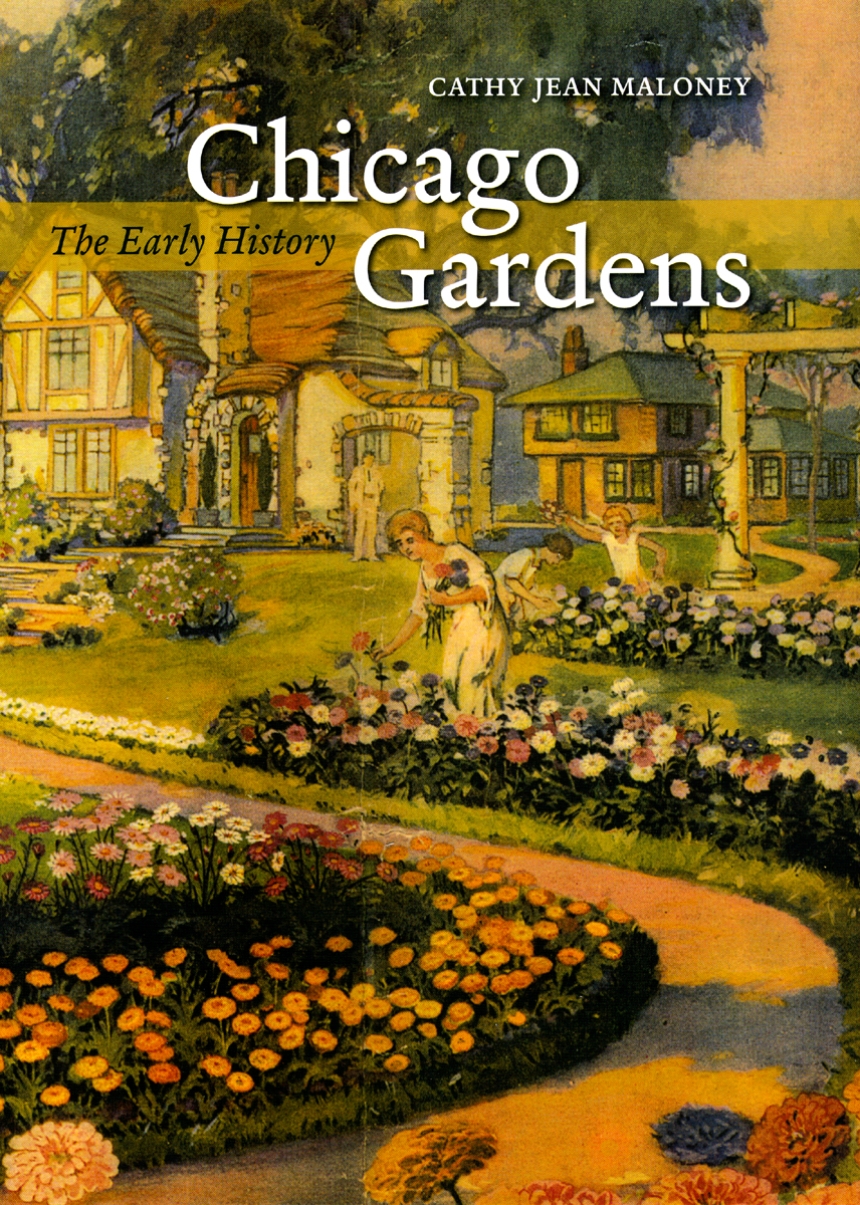Chicago Gardens
The Early History
Cathy Jean Maloney has spent decades researching the city’s horticultural heritage, and here she reveals the unusual history of Chicago’s first gardens. Challenged by the region’s clay soil, harsh winters, and fierce winds, Chicago’s pioneering horticulturalists, Maloney demonstrates, found imaginative uses for hardy prairie plants. This same creative spirit thrived in the city’s local fruit and vegetable markets, encouraging the growth of what would become the nation’s produce hub. The vast plains that surrounded Chicago, meanwhile, inspired early landscape architects, such as Frederick Law Olmsted, Jens Jensen, and O.C. Simonds, to new heights of grandeur.
Maloney does not forget the backyard gardeners: immigrants who cultivated treasured seeds and pioneers who planted native wildflowers. Maloney’s vibrant depictions of Chicagoans like “Bouquet Mary,” a flower peddler who built a greenhouse empire, add charming anecdotal evidence to her argument–that Chicago’s garden history rivals that of New York or London and ensures its status as a world-class capital of horticultural innovation.
With exquisite archival photographs, prints, and postcards, as well as field guide descriptions of living legacy gardens for today’s visitors, Chicago Gardens will delight green-thumbs from all parts of the world.
See five legacy gardens.
464 pages | 11 color plates, 166 halftones | 7 x 10 | © 2008
Biological Sciences: Botany, Natural History
Reviews
Table of Contents
Preface
Acknowledgments
1 Introduction
2 Growers and Sowers: Planters of the Plains and Parkways
3 Planting the Prairie: Defining the New Plant Palette
4 Chicago by Design: A Blank Canvas for Cultivated Gardens
5 Suburban Sojourn: Gardens in the Country
6 Fairs and Flowers: Chicago Hosts a World of Fairs
7 Prairie Pastimes: Entertaining in the Garden
8 The Next Century
Appendix 1 Plant List by Time Period
Appendix 2 Chicago Plants
Appendix 3 Key Names and Groups in the Garden City, 1833–1933
Notes
Bibliography
Index
